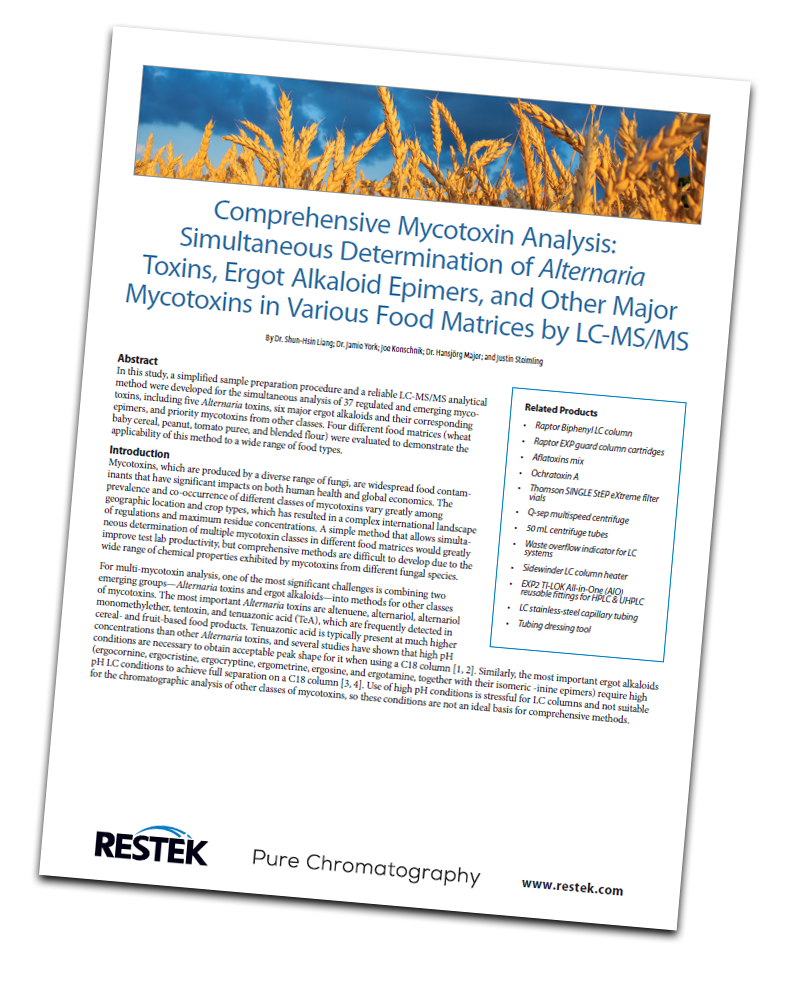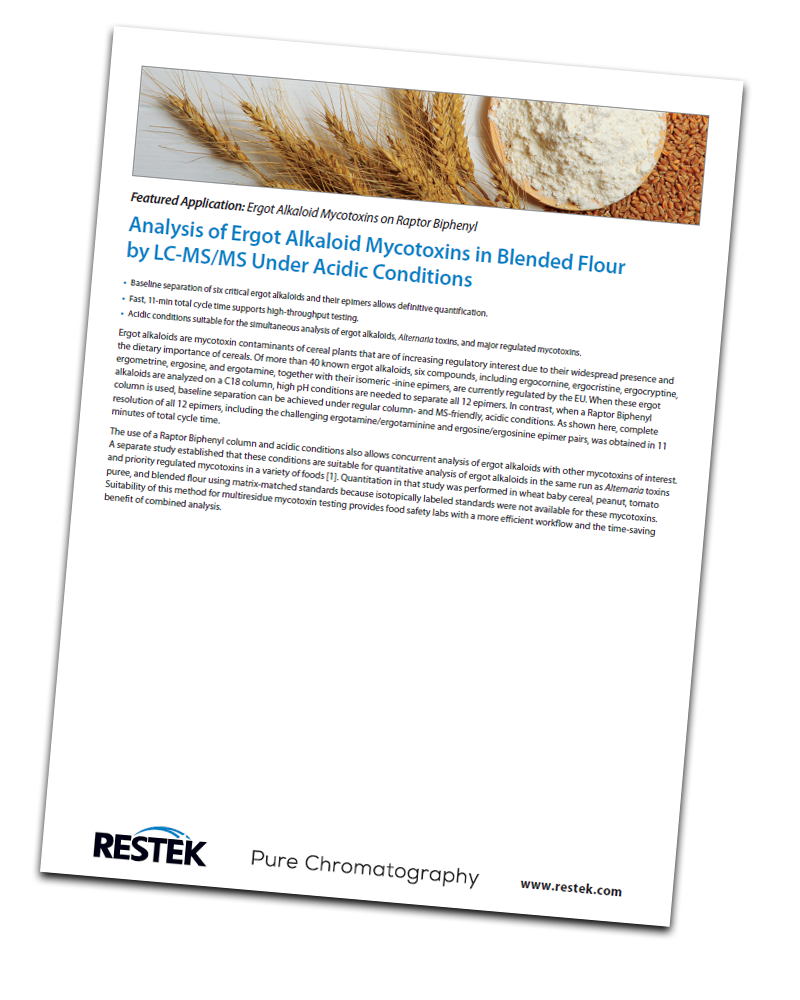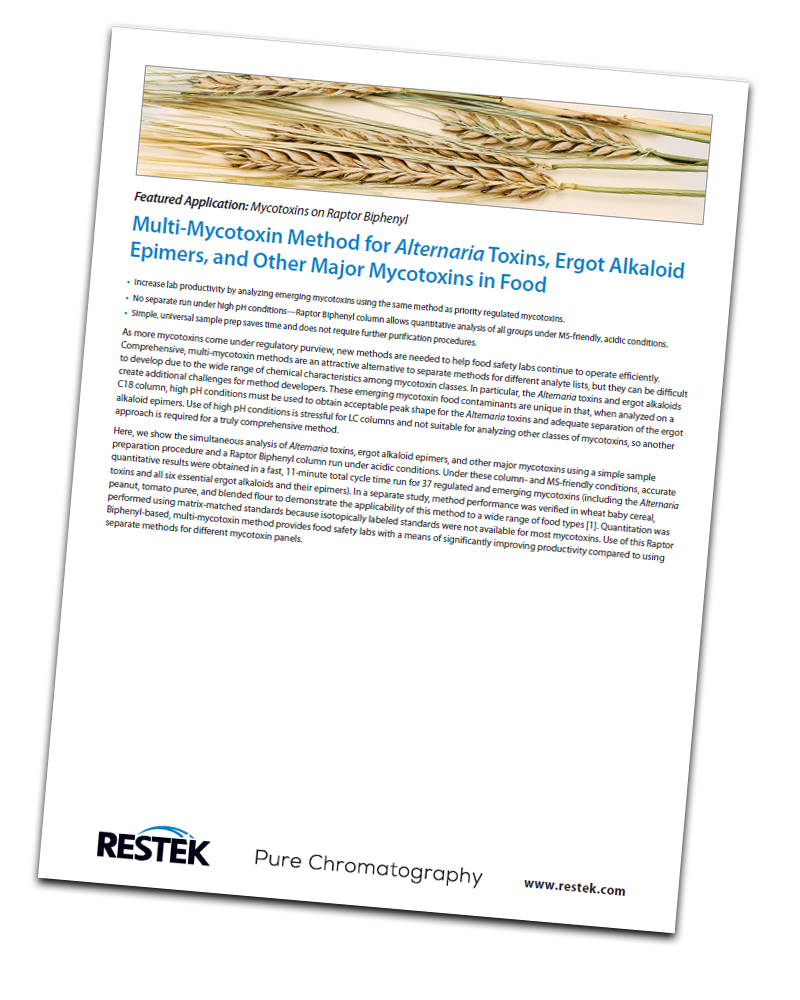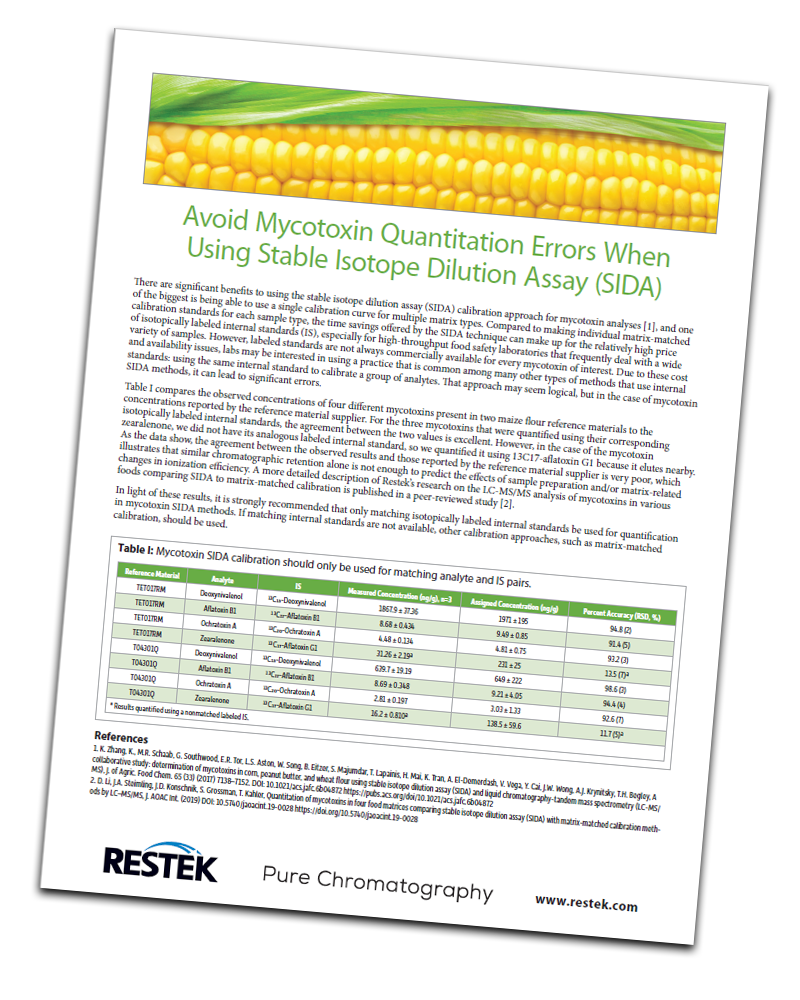These application notes provide suitable methods for mycotoxin analysis offering food safety labs a more efficient workflow and time-saving benefits across multiple food matrices.
 Mycotoxins, which are produced by a diverse range of fungi, are widespread food contaminants
Mycotoxins, which are produced by a diverse range of fungi, are widespread food contaminants
that have significant impacts on both human health and global economics. As more mycotoxins come under regulatory purview, new methods are needed to help food safety labs continue to operate efficiently.
Comprehensive, multi-mycotoxin methods are an attractive alternative to separate methods for different analyte lists, but they can be difficult to develop due to the wide range of chemical characteristics among mycotoxin classes.
These applications show that by using a Raptor Biphenyl column rather than a C18 column, baseline separation can be achieved under regular column- and MS-friendly, acidic conditions. In addition, simple, universal sample prep saves time and does not require further purification procedures.
It is also demonstrated how significant benefits using the stable isotope dilution assay (SIDA) calibration approach for mycotoxin analyses can be achieved — one of the biggest being able to use a single calibration curve for multiple matrix types.
Applications include:
 Comprehensive Mycotoxin Analysis: Simultaneous Determination of Alternaria Toxins, Ergot Alkaloid Epimers, and Other Major Mycotoxins in Various Food Matrices by LC-MS/MS
Comprehensive Mycotoxin Analysis: Simultaneous Determination of Alternaria Toxins, Ergot Alkaloid Epimers, and Other Major Mycotoxins in Various Food Matrices by LC-MS/MS
In this study, a simplified sample preparation procedure and a reliable LC-MS/MS analytical method were developed for the simultaneous analysis of 37 regulated and emerging mycotoxins, including five Alternaria toxins, six major ergot alkaloids and their corresponding epimers, and priority mycotoxins from other classes.
 Analysis of Ergot Alkaloid Mycotoxins in Blended Flour by LC-MS/MS Under Acidic Conditions
Analysis of Ergot Alkaloid Mycotoxins in Blended Flour by LC-MS/MS Under Acidic Conditions
This application uses a Raptor Biphenyl column and acidic conditions to allow concurrent analysis of ergot alkaloids with other mycotoxins of interest. Suitability of this method for multiresidue mycotoxin testing provides food safety labs with a more efficient workflow and the time-saving benefit of combined analysis.
 Multi-Mycotoxin Method for Alternaria Toxins, Ergot Alkaloid Epimers, and Other Major Mycotoxins in Food
Multi-Mycotoxin Method for Alternaria Toxins, Ergot Alkaloid Epimers, and Other Major Mycotoxins in Food
Here, we show the simultaneous analysis of Alternaria toxins, ergot alkaloid epimers, and other major mycotoxins using a simple sample preparation procedure and a Raptor Biphenyl column run under acidic conditions. Under these column- and MS-friendly conditions, accurate quantitative results were obtained in a fast, 11-minute total cycle time run.
 Avoid Mycotoxin Quantitation Errors When Using Stable Isotope Dilution Assay (SIDA)
Avoid Mycotoxin Quantitation Errors When Using Stable Isotope Dilution Assay (SIDA)
This application note shows how there are significant benefits to using the stable isotope dilution assay (SIDA) calibration approach for mycotoxin analyses — the biggest being able to use a single calibration curve for multiple matrix types.
If you have a colleague who may be interested in the subject of these application notes, please click below.





